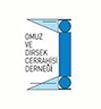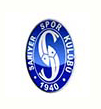Knee
Normal Anatomy of Knee Joint
Arthroscopy of the Knee Joint
The arthroscope is a fiber-optic telescope that can be inserted into a joint (commonly the knee, shoulder and ankle) to evaluate and treat a number of conditions. A camera is attached to the arthroscope and the picture is visualized on a TV monitor. Most arthroscopic surgery is performed as day surgery and is usually done under general anesthesia. Knee arthroscopy is common, and millions of procedures are performed each year around the world. Arthroscopy is useful in evaluating and treating the following conditions
You can use the following buttons for more information
Meniscal Repair
Meniscus is the C-shaped two pieces of cartilage located between thighbone and shin bone that act as shock absorbers and cushion the joints. Meniscus distributes the body weight uniformly across the joint and avoids the pressure on any one part of the joint and development of arthritis.
Being the weight bearing part, meniscus is prone to wear and tear and meniscal tear is one of the common knee injuries. Meniscal tear may be developed by people of all ages and is more common in individuals who play contact sports.
You can use the following buttons for more information
ACL RECONSTRUCTION
The anterior cruciate ligament is one of the major stabilizing ligaments in the knee. It is a strong rope like structure located in the centre of the knee running from the femur to the tibia.
When this ligament tears unfortunately it doesn’t heal and often leads to the feeling of instability in the knee.
You can use the following buttons for more information
Total Knee Replacement
A Total Knee Replacement (TKR) or Total Knee Arthroplasty is a surgery that replaces an arthritic knee joint with artificial metal or plastic replacement parts called the ‘prostheses’.
The procedure is usually recommended for older patients who suffer from pain and loss of function from arthritis and have failed results from other conservative methods of therapy.
You can use the following buttons for more information
Computer Assisted Surgery
Computer navigation technique is the latest revolution in orthopaedic surgery. This technology is used for replacement of arthritic knee joints.
Computer navigation provides the surgeon with the real time 3-D images of the mapped patient’s affected joint and the surgical instruments during surgery. The data for the images is provided by the infrared sensors fixe
You can use the following buttons for more information
Knee Exercice
Lie on your side with your injured leg on top and the bottom leg bent to provide support. Straighten your top leg and slowly raise it to 45°, keeping your knee straight, but not locked. Hold this position for 5 seconds. Slowly lower your leg and relax.
You can use the following buttons for more information
-









 KNEE
KNEE HIP
HIP SHOULDER
SHOULDER SPORT
SPORT TRAUMA
TRAUMA FOOT
FOOT PATIENT FORMS
PATIENT FORMS CONTACT
CONTACT 



